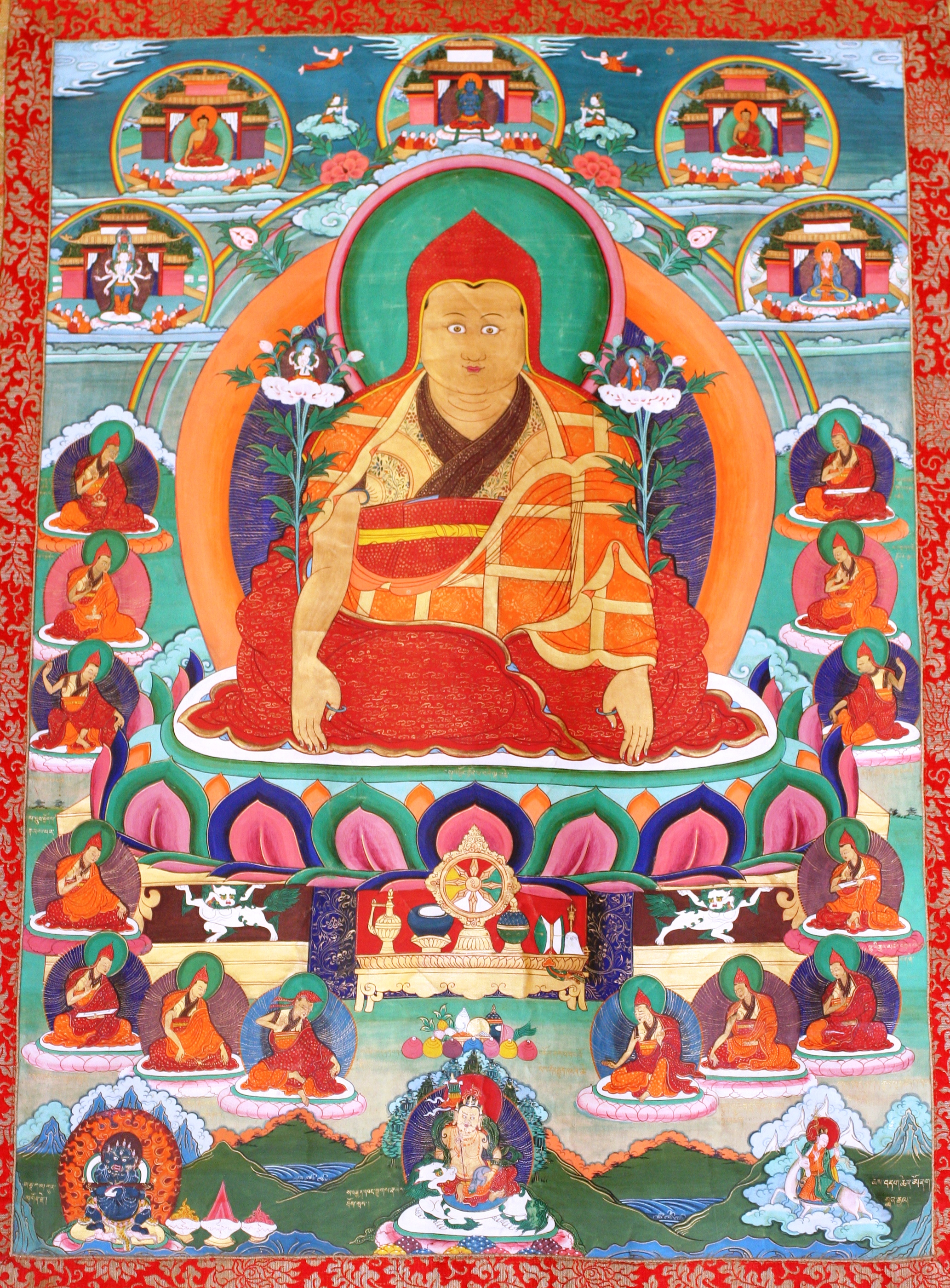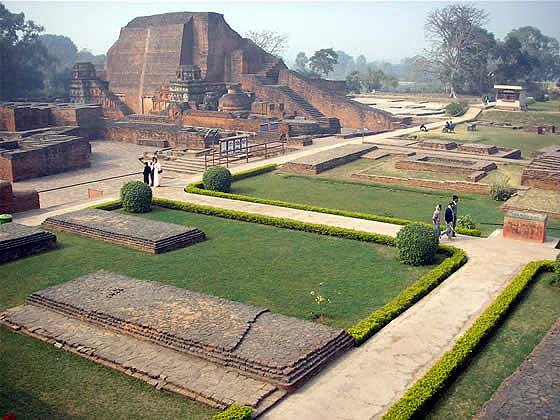|
Jonang
The Jonang () is a school of Indo-Tibetan Buddhism. Its origins in Tibet can be traced to the early 12th century master Yumo Mikyo Dorje. It became widely known through the work of the popular 14th century figure Dolpopa Sherab Gyaltsen. The Jonang school's main practice is the ''Kālacakra tantra'' (''Wheel of Time Tantra''), and they are widely known for their defense of the philosophy known as shentong ("empty of other"). After a period of influence, the Jonang tradition suffered a series of reversals, partly due to its suppression by the politically dominant Gelug school under the Fifth Dalai Lama in the 17th century. Jonang did survive in Amdo, from which they eventually re-established themselves in other regions like Golok, Nakhi, and Kham. They have continued practicing uninterrupted to this day. An estimated 5,000 monks and nuns of the Jonang tradition practice today in these areas. However, their teachings were limited to these regions until the Rimé moveme ... [...More Info...] [...Related Items...] OR: [Wikipedia] [Google] [Baidu] |
Rangtong And Shentong
''Rangtong'' and ''shentong'' are two distinctive views on emptiness ( sunyata) and the two truths doctrine within Tibetan Buddhism. Rangtong (; "empty of self-nature") is a philosophical term in Tibetan Buddhism which is used by Tibetan defenders of shentong, like Dölpopa, to distinguish the majority Madhyamaka teaching on the nature of śūnyatā or "emptiness", namely that all phenomenon are empty of an enduring and/or unchanging essence or "self," and that this emptiness is not an absolute reality, but a mere nominal characterisation of phenomena. It is related to the '' prasangika'' approach, which argues that no positive statements should be made to deconstruct the notion of inherent existence, but only arguments which show the logical implications and absurdity of statements. This position is the mainstream Gelugpa interpretation of Madhyamaka, one of the main Mahayana schools, which dominates Vajrayana Buddhism. ''Shentong'' ( Wylie: ''gzhan stong'', "emptiness of other ... [...More Info...] [...Related Items...] OR: [Wikipedia] [Google] [Baidu] |
5th Dalai Lama
The 5th Dalai Lama, Ngawang Lobsang Gyatso (; ; 1617–1682) was recognized as the 5th Dalai Lama, and he became the first Dalai Lama to hold both Tibet's political and spiritual leadership roles. He is often referred to simply as the Great Fifth, being the key religious and temporal leader of Tibetan Buddhism and Tibet. He is credited with unifying all of Tibet under the Ganden Phodrang, after Gushri Khan's successful military interventions. As an independent head of state, he established priest and patron relations with both Mongolia and the Qing dynasty simultaneously, and had positive relations with other neighboring countries. He began the custom of meeting early European explorers. The 5th Dalai Lama built the Potala Palace, and also wrote 24 volumes' worth of scholarly and religious works on a wide range of subjects. Early life To understand the context within which the Dalai Lama institution came to hold temporal power in Tibet during the lifetime of the 5th, ... [...More Info...] [...Related Items...] OR: [Wikipedia] [Google] [Baidu] |
Kalachakra
''Kālacakra'' () is a Polysemy, polysemic term in Vajrayana, Vajrayana Buddhism and Hinduism that means "wheel of time" or "time cycles". "''Kālacakra''" is also the name of a series of Buddhist texts and a major practice lineage in History of Buddhism in India, Indian Buddhism and Tibetan Buddhism. The tantra is considered to belong to the unexcelled yoga (''Anuttarayoga Tantra, anuttara-yoga'') class. Kālacakra also refers both to a patron Tantra, tantric deity or yidam in Vajrayana and to the philosophies and yogas of the Kālacakra tradition. The tradition's origins are in India and its most active later history and presence has been in Tibet. The tradition contains teachings on cosmology, theology, philosophy, sociology, soteriology, myth, prophecy, Ayurveda, medicine and yoga. It depicts a mythic reality whereby cosmic and socio-historical events correspond to processes in the bodies of individuals. These teachings are meant to lead to a transformation of one's body and ... [...More Info...] [...Related Items...] OR: [Wikipedia] [Google] [Baidu] |
Dolpopa Sherab Gyaltsen
Dölpopa Shérap Gyeltsen () (1292–1361),Newland (1992). p. 29 known simply as Dölpopa, was a Tibetan Buddhist master. Known as "The Buddha from Dölpo," a region in modern Nepal, he was the principal exponent of the shentong teachings, and an influential member of the Jonang tradition of Tibetan Buddhism. Biography Dölpopa was born in Dölpo. In 1309, when he was seventeen, he ran away from home to seek the Buddhist teachings, first in Mustang and then in Tibet. In 1314, when he was twenty-two years old, Dölpopa received full monastic ordination from the famous abbot of Choelung Monastery, Sönam Trakpa (1273–1352), and made a vow at the time to never eat slaughtered meat again. In 1321, Dölpopa visited Jonang Monastery at Jomonang (which was later destroyed during the Cultural Revolution) for the first time. He then visited Tsurphu Monastery for the first time and had extensive discussions with Rangjung Dorje, 3rd Karmapa Lama, about doctrinal issues. It appea ... [...More Info...] [...Related Items...] OR: [Wikipedia] [Google] [Baidu] |
Tibet
Tibet (; ''Böd''; ), or Greater Tibet, is a region in the western part of East Asia, covering much of the Tibetan Plateau and spanning about . It is the homeland of the Tibetan people. Also resident on the plateau are other ethnic groups such as Mongols, Monpa people, Monpa, Tamang people, Tamang, Qiang people, Qiang, Sherpa people, Sherpa, Lhoba people, Lhoba, and since the 20th century Han Chinese and Hui people, Hui. Tibet is the highest region on Earth, with an average elevation of . Located in the Himalayas, the highest elevation in Tibet is Mount Everest, Earth's highest mountain, rising above sea level. The Tibetan Empire emerged in the 7th century. At its height in the 9th century, the Tibetan Empire extended far beyond the Tibetan Plateau, from the Tarim Basin and Pamirs in the west, to Yunnan and Bengal in the southeast. It then divided into a variety of territories. The bulk of western and central Tibet (Ü-Tsang) was often at least nominally unified under a ser ... [...More Info...] [...Related Items...] OR: [Wikipedia] [Google] [Baidu] |
Taranatha
Tāranātha (1575–1634) was a Lama of the Jonang school of Tibetan Buddhism. He is widely considered its most remarkable scholar and exponent. Taranatha was born in Tibet, supposedly on the birthday of Padmasambhava. His original name was Kun-dga'-snying-po, the Sanskrit equivalent of which is Anandagarbha. However, he adopted Taranatha, the Sanskrit name by which he was generally known, as an indication of the value he placed on his Sanskrit scholarship in an era when mastery of the language had become much less common in Tibet than it had once been. He was also paying homage to his Indian teacher, Buddhaguptanātha. His exceptional qualities are said to have been recognized by others at a young age, as is often the case with great masters. He studied under such masters as Je Draktopa, Yeshe Wangpo, Kunga Tashi and Jampa Lhundrup, although his primary teacher was Buddhaguptanatha. Taranatha was recognized by Khenchen Lungrik Gyatso as the rebirth of Krishnacarya and the K ... [...More Info...] [...Related Items...] OR: [Wikipedia] [Google] [Baidu] |
Gelug
file:DalaiLama0054 tiny.jpg, 240px, 14th Dalai Lama, The 14th Dalai Lama (center), the most influential figure of the contemporary Gelug tradition, at the 2003 Kalachakra ceremony, Bodh Gaya, Bodhgaya (India) The Gelug (, also Geluk; 'virtuous')Kay, David N. (2007). ''Tibetan and Zen Buddhism in Britain: Transplantation, Development and Adaptation,'' p. 39. Routledge. is the newest of the four major schools of Tibetan Buddhism. It was founded by Je Tsongkhapa (1357–1419), a Tibetan people, Tibetan philosopher, Vajrayana, tantric yogi and lama and further expanded and developed by his disciples (such as Khedrup Gelek Pelzang, 1st Panchen Lama, Khedrup Je, Gyaltsab Je, Gyaltsap Je, Dulzin Drakpa Gyaltsen, and 1st Dalai Lama, Gendün Drubpa). The Gelug school is alternatively known as Kadam (''bKa’-gdams gsar-pa''), since it sees itself as a continuation of the Kadam (Tibetan Buddhism), Kadam tradition of Atiśa, Atisha (c. 11th century). The school of New Kadam, or New Kadampa ... [...More Info...] [...Related Items...] OR: [Wikipedia] [Google] [Baidu] |
Yumo Mikyo Dorje
Yumo Mikyö Dorjé () was a student of the Kashmiri scholar Somanātha and an 11th-century Kalachakra master. Yumo Mikyö Dorjé is regarded as one of the earliest Tibetan articulators of a shentong view of śūnyatā — an understanding of the absolute radiant nature of reality. Emphasized within the Kalachakra tantra and Gautama Buddha's teachings on Buddha-nature in the so-called Third Turning of the Wheel of the Dharma of the Yogacara school of Buddhism philosophy; this view later became emblematic of the Jonang tradition of Tibetan Buddhism Tibetan Buddhism is a form of Buddhism practiced in Tibet, Bhutan and Mongolia. It also has a sizable number of adherents in the areas surrounding the Himalayas, including the Indian regions of Ladakh, Gorkhaland Territorial Administration, D .... References External links Early Jonangpa in Tibet, Jonang Foundation Scholars of Buddhism from Tibet Jonang Lamas Tibetan Buddhist spiritual teachers Year of birth miss ... [...More Info...] [...Related Items...] OR: [Wikipedia] [Google] [Baidu] |
Buddhist Philosophy
Buddhist philosophy is the ancient Indian Indian philosophy, philosophical system that developed within the religio-philosophical tradition of Buddhism. It comprises all the Philosophy, philosophical investigations and Buddhist logico-epistemology, systems of rational inquiry that developed among various schools of Buddhism in ancient India following the ''Parinirvana, parinirvāṇa'' of Gautama Buddha (c. 5th century BCE), as well as the further developments which followed the Silk Road transmission of Buddhism, spread of Buddhism throughout Asia. Buddhism combines both philosophical reasoning and the Buddhist meditation, practice of meditation.Siderits, Mark. Buddhism as philosophy, 2007, p. 6 The Buddhist religion presents a multitude of Buddhist paths to liberation; with the expansion of early Buddhism from ancient India to Sri Lanka and subsequently to East Asia and Southeast Asia, Buddhist thinkers have covered topics as varied as cosmology, ethics, epistemology, logic ... [...More Info...] [...Related Items...] OR: [Wikipedia] [Google] [Baidu] |
Tibetan Buddhism
Tibetan Buddhism is a form of Buddhism practiced in Tibet, Bhutan and Mongolia. It also has a sizable number of adherents in the areas surrounding the Himalayas, including the Indian regions of Ladakh, Gorkhaland Territorial Administration, Darjeeling, Sikkim, and Arunachal Pradesh, as well as in Nepal. Smaller groups of practitioners can be found in Central Asia, some regions of China such as Northeast China, Xinjiang, Inner Mongolia and some regions of Russia, such as Tuva, Buryatia, and Kalmykia. Tibetan Buddhism evolved as a form of Mahayana, Mahāyāna Buddhism stemming from the latest stages of Indian Buddhism (which included many Vajrayana, Vajrayāna elements). It thus preserves many Indian Buddhist Tantra, tantric practices of the Gupta Empire, post-Gupta Medieval India, early medieval period (500–1200 CE), along with numerous native Tibetan developments. In the pre-modern era, Tibetan Buddhism spread outside of Tibet primarily due to the influence of the Mongol Emp ... [...More Info...] [...Related Items...] OR: [Wikipedia] [Google] [Baidu] |
Katok Tsewang Norbu
Katok Rigdzin Tsewang Norbu (, 1698–1755) was a teacher of the Nyingma school of Tibetan Buddhism who notably championed the shentong () or "empty of other" view first popularised by the Jonang school. He also examined the Chan Buddhist teachings of Hashang Mahayana, known as Moheyan. Despite the shentong view being banned as heretical, he successfully taught and cultivated its teachings as a legitimate view of the Nyingma school. Sonam Deutsen offered to enthrone Rigdzin Tsewang Norbu, when he was 24 years of age, as the Rinpoche of Katok Monastery, but he declined and said he preferred his life as a "vagabond". His seat remained at the Katok Monastery of Tibet. Scholarly impact Katok Tsewang Norbu's interests spanned many of the important Nyingma and Kagyu teachings of Tibetan Buddhism, and Bon, including several not associated with the Nyingma schools: His interest in Chan followed its "defeat" as a teaching in Tibet at the famous 8th century Samye Monastery debate, afte ... [...More Info...] [...Related Items...] OR: [Wikipedia] [Google] [Baidu] |









